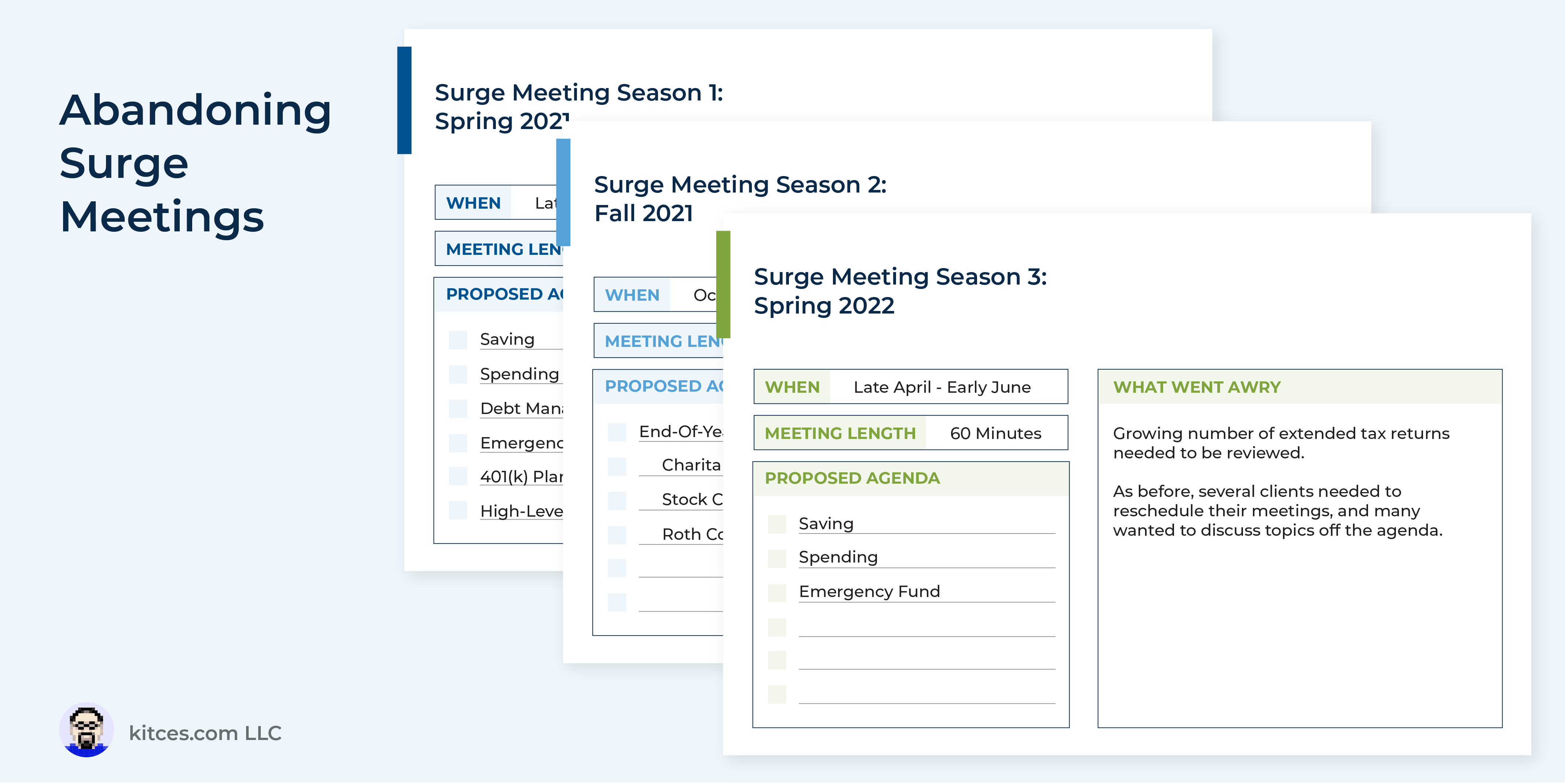One of the most important parts of a financial advisor’s value proposition is time spent meeting with their clients. These meetings allow advisors to listen to their clients’ concerns, make planning recommendations, and chart a course for the coming months. And while advisors recognize the importance of holding regular client meetings, there is no consensus about the ‘best’ cadence for them. For instance, some firms spread these meetings out throughout the year while others bunch them into a limited number of months, or even weeks.
This latter approach, sometimes called Surge meetings, has gained increasing popularity among advisory firms in the past few years. Advisors who have implemented a Surge meeting approach have cited a range of benefits from doing so, including boosted productivity, a more systematic client experience, increased efficiency of client reviews and onboarding, and an overall smoother financial planning process for advisors and clients. At the same time, implementing a Surge approach can come with a range of challenges, such as the high level of endurance required of advisors to hold several client meetings every day for prolonged periods, the scheduling logistics needed to accommodate both the advisor’s agenda as well as the items on a client’s mind, and the capacity to preserve a meaningful and personal client experience throughout the process.
In this guest post, Meg Bartelt, Founder and Lead Planner at Flow Financial Planning, discusses how her firm implemented a Surge meeting schedule, and ultimately decided to use a different approach for their client meetings after 3 Surge seasons.
There were several issues with implementing Surge seasons for the firm, including challenges around many of their clients needing to reschedule meetings (resulting in a need to extend Surge seasons). Advisors often had insufficient time during the meetings to cover items on both the firm’s proposed agenda as well as those that the clients brought up, and there was an overall level of exhaustion from holding a concentrated set of meetings while maintaining the high level of personal connection and quick turnaround that the firm’s clients expect (and that the advisors enjoy providing!). Even after making some adjustments (from lengthening the time of meetings to 75 minutes to reducing the scope of technical work on the agenda), the need to meet with clients throughout the year to address high-stakes life changes as they arose (a common theme for many of the firm’s clients), and the desire to go deeper and broader with clients in a more freely structured format led the firm to transition away from the surge approach.
Now, the firm holds 2-hour Annual Renewal Meetings with clients while scheduling additional meetings as needed during the year. Though notably, non-emergency meetings are limited to certain days of the week and weeks of the month, and there are certain months of the year when no meetings are formally scheduled. The firm has also implemented a limited client service calendar, supporting clients on key issues when they occur during the year (e.g., tax letters in January and open enrollment period support in the Fall).
Ultimately, the key point is that just as no single planning strategy is applicable for every client, no single practice management technique is appropriate for every financial planning firm. And regardless of how successfully advisors may claim their particular meeting approach has worked for them, it’s far more important for advisors to experiment with what works best for their firm and how they choose to do business. As while all firms have unique needs and unique clients, finding the right balance between the desire for flexibility to focus holistically on each client and the need to streamline processes and procedures can be the key to identifying the best approach for the firm!


